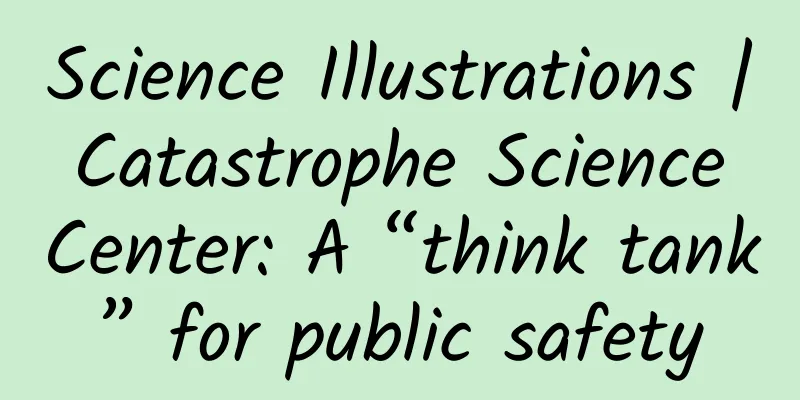Artificial Intelligence or Artificial Idiotism? How far are we from true “autonomous driving”?

|
Audit expert: Liu Xiangquan Associate Professor, Director of the Robotics Engineering Department, University of Information Science and Technology Beijing I wonder if you have ever seen the classic science fiction film "I, Robot"? Source: "I, Robot" There is a classic scene in the movie that is very impressive: the protagonist is sitting in a car traveling at high speed, flipping through case information in his hand. The driver doesn't even have a steering wheel, but the car can run very smoothly. Source: "I, Robot" This is probably the prototype of autonomous driving in many people's minds: you don't need to control the steering wheel and the accelerator and brakes, the car can take you to your destination safely. With the advancement of technology, this dream does not seem so far-fetched, but many people still have doubts about the development of autonomous driving. The reason is simple: you don’t know whether the car is being controlled by “artificial intelligence” or “artificial intelligence”. How automatic is considered autonomous driving? When we buy a vehicle with autonomous driving function, the salesperson often introduces it like this: Our car has L2 level autonomous driving function. What does L2 mean? Currently, there are two common classification standards for autonomous driving: NHTSA classification (proposed by the National Highway Traffic Safety Administration) and SAE classification (proposed by the Society of Automotive Engineers) . The term L2 also originates from these two classification standards. In order to standardize the domestic autonomous driving standards, in August 2021, the recommended national standard GB/T40429-2021 "Automotive Driving Automation Classification" proposed by the Ministry of Industry and Information Technology and managed by the National Technical Committee for Automotive Standardization was officially released and officially implemented on March 1, 2022. The current driving automation levels are L0, L1, L2, L3, L4, and L5, a total of 6 levels. The relationship between driving automation levels and classification elements is shown in the following table: Source: Ministry of Industry and Information Technology of the People’s Republic of China It can be seen that different levels of autonomous driving correspond to different operating subjects, monitoring measures, takeover methods and application scenarios. The era when Xiali Alto was everywhere on the streets was the era of L0. The emergence of functions such as ABS and cruise control has allowed autonomous driving to enter the door of L1, and the comprehensive use of functions such as lane assistance and adaptive cruise has upgraded autonomous driving to L2. From L3, the driving protagonist is transformed from driver operation to vehicle autonomous driving. L3 is also an important watershed in the application of autonomous driving technology. The goal of autonomous driving technology is to enable cars to perceive their surroundings, make decisions and perform actions without the intervention of human drivers, thereby avoiding "road killers", improving driving efficiency and creating a safer and more efficient traffic environment. Are there different schools of thought in autonomous driving? In any field, there is more than one path to the finish line, and the same is true for autonomous driving. In the "Martial Arts Forest" of autonomous driving solutions, there are "two major schools": the "single-vehicle intelligence" school and the "vehicle-road collaboration" school. The "single-vehicle intelligence" school focuses on the intelligence of rolling vehicles. Through sensors such as cameras, lidar, inertial measurement units and efficient and accurate algorithms, the vehicle can achieve autonomous driving. The "vehicle-road collaboration" faction not only focuses on cars but also on roads. By fully sensing the information of people, cars and roads , they can play a collaborative role and make both cars and roads "smart". Source|"Ip Man 3" In addition to the differences between these two solutions, the realization of autonomous driving also requires the support of technologies such as chips, sensors, and high-precision maps. In the field of sensors, there are also two schools of thought, namely the "lidar" school and the "pure visual computing" school. The "LiDAR" school uses LiDAR as the main sensor, and cooperates with millimeter-wave radar, ultrasonic sensors, cameras, etc. to obtain external information and complete autonomous driving . Its advantage is that it can obtain spatial depth information and does not require external lighting assistance, but it lacks maturity and its effect is greatly reduced in rainy and foggy weather. At the same time, due to the higher requirements for CPU processing power, the cost is also higher. The "pure visual computing" school uses cameras to simulate human eyes for vehicles . Its "big disciple" is Tesla, which uses the "8-camera" pure visual solution. Low cost and high recognition are the advantages of the "pure visual computing" school, while its reliance on artificial intelligence training and high-precision maps are its weaknesses. Source: iCar These "schools" each have their own advantages and disadvantages, but the problems faced by autonomous driving are more than just choosing which path is the most suitable to reach the destination. What are the practical difficulties of high-level autonomous driving? At present, some car companies have claimed that their company's autonomous driving level has reached the L3 level. However, due to traffic safety issues caused by improper use of autonomous driving, there is still a long way to go before autonomous driving can truly "enter the homes of ordinary people." At present, the further development of autonomous driving is mainly affected by the following aspects: 01 Limitations of AI development "Deep learning" is an important way to make artificial intelligence more "intelligent", which requires investment in algorithms, manpower and trial-and-error costs. Otherwise, the occasional "mental retardation" of the artificial intelligence that controls intelligent driving may cause great harm to traffic safety. 02 HD map addiction At present, many autonomous driving technologies rely heavily on high-definition maps, which also puts higher requirements on the "freshness" of high-definition maps. However, many high-definition maps can only be updated weekly, and most of them are manually updated through relatively primitive data collection vehicles. This is relatively backward for the ever-changing urban construction. 03 Laws and regulations need to be improved Have you heard of the "trolley problem"? If an autonomous driving vehicle causes a traffic accident, how should the responsibility be divided and what is the relationship with the driver? The division of legal responsibility for autonomous driving has become a hot topic in legal research. Before the relevant laws and regulations are introduced, it is difficult for us to get in touch with high-level autonomous driving technology. 04 Complexity of road conditions Vehicles that suddenly change lanes, electric vehicles that run amok, pedestrians that "peek out"... the complexity of the road surface often catches artificial intelligence off guard. Autonomous driving currently has strict usage scenarios. If we want to achieve "full-scenario autonomous driving", researchers in this field need to continue to "roll up". Source: Sina Autonomous driving still has a long way to go, but the route of technological innovation to promote high-quality development of the capital's transportation remains unchanged: as of the end of February, Beijing has opened more than 1,160 kilometers of autonomous driving test roads, covering 7 districts, with a total test mileage of more than 20 million kilometers, and issued test licenses for 384 vehicles from 18 companies . This year, Beijing will accelerate the expansion of the high-level autonomous driving demonstration zone 3.0. It is expected that the demonstration zone will expand to 600 square kilometers by June this year. By the end of the year, autonomous driving applications will also be tested in airports, railway stations, road freight and other areas and industries. Through the Internet, we have seen a lot of "black technology" realized through autonomous driving technology. Perhaps one day we will really have a "mature car" that can safely reach the destination without driver operation, making the scenes in science fiction movies a daily reality. References: "The city's smart transportation "report card" is released, with more than 1,160 kilometers of autonomous driving test roads open", Beijing Daily, March 21, 2024, p. 005 "Comparison of Duty of Attention between Assisted Driving and Autonomous Driving", Jianghan Forum 2024.3 "In the era of autonomous driving, will high-precision maps become a "standard feature"? ", Science Popularization China |
<<: Huh? It’s just spring in Beijing and summer in Guangzhou?
>>: Thyroid cancer is becoming more and more common. What should you eat after surgery?
Recommend
HEYTEA launches new brand strategy
Heytea has reduced its prices again! When hearing...
It is said that getting more sun exposure can supplement calcium, but do children still need sunscreen?
Summer is coming, and many people are using sun p...
SaaS Enterprise Promotion and Customer Acquisition Guide: Finding the Best Channel
Buffett said: If you have 40 wives and concubines...
Not only can it make rice more delicious, but it can also create an "ocean ranch". There are so many surprises about iron that you don't know!
1. Iron and life from idioms Iron is not only a m...
Wusong Academy: Public prosecution thinking and defense strategy case real scene detailed explanation of criminal defense practice - Baidu cloud download
This course comes from Wusong Academy: prosecutor...
Where can I buy Yulin crispy dog meat?
Autumn wind blows, eat dog meat In Guangzhou, it ...
With an average daily playback volume of over 4 billion, how does Xigua Video stand out?
While China's long-form video platforms are a...
Nature: This century-old problem was perfectly solved by "it" in 48 hours
In 1907, Belgian-American chemist Leo Baekeland i...
Alibaba and SAIC: What handshake? What peace?
The recent conflict between Alibaba and the State...
2021 Tik Tok Hot-selling Live Broadcast Room Creation Plan Course
2021 Tik Tok Hot-selling Live Broadcast Room Crea...
5 steps for integrated marketing promotion across the entire network, this is the normal approach!
As the company develops and its market share incr...
Fei Fan: Douyin live streaming sales boom operation growth training camp, teach you how to play live streaming sales
Fei Fan: Douyin live streaming sales boom operati...
Life expectancy cut in half in 50 years! Will the disappearance of bees lead to human extinction?
Recently, the University of Maryland published a ...
Life Encyclopedia丨Taking off shoes = biological weapons? Pay attention to these tips for removing odor from shoes!
In daily life, odorous shoes are a headache. When...
Testing efficiency doubled! The second NCTS China Cloud Testing Summit opened a new paradigm for AI testing
Testing efficiency doubled! The second NCTS China...









